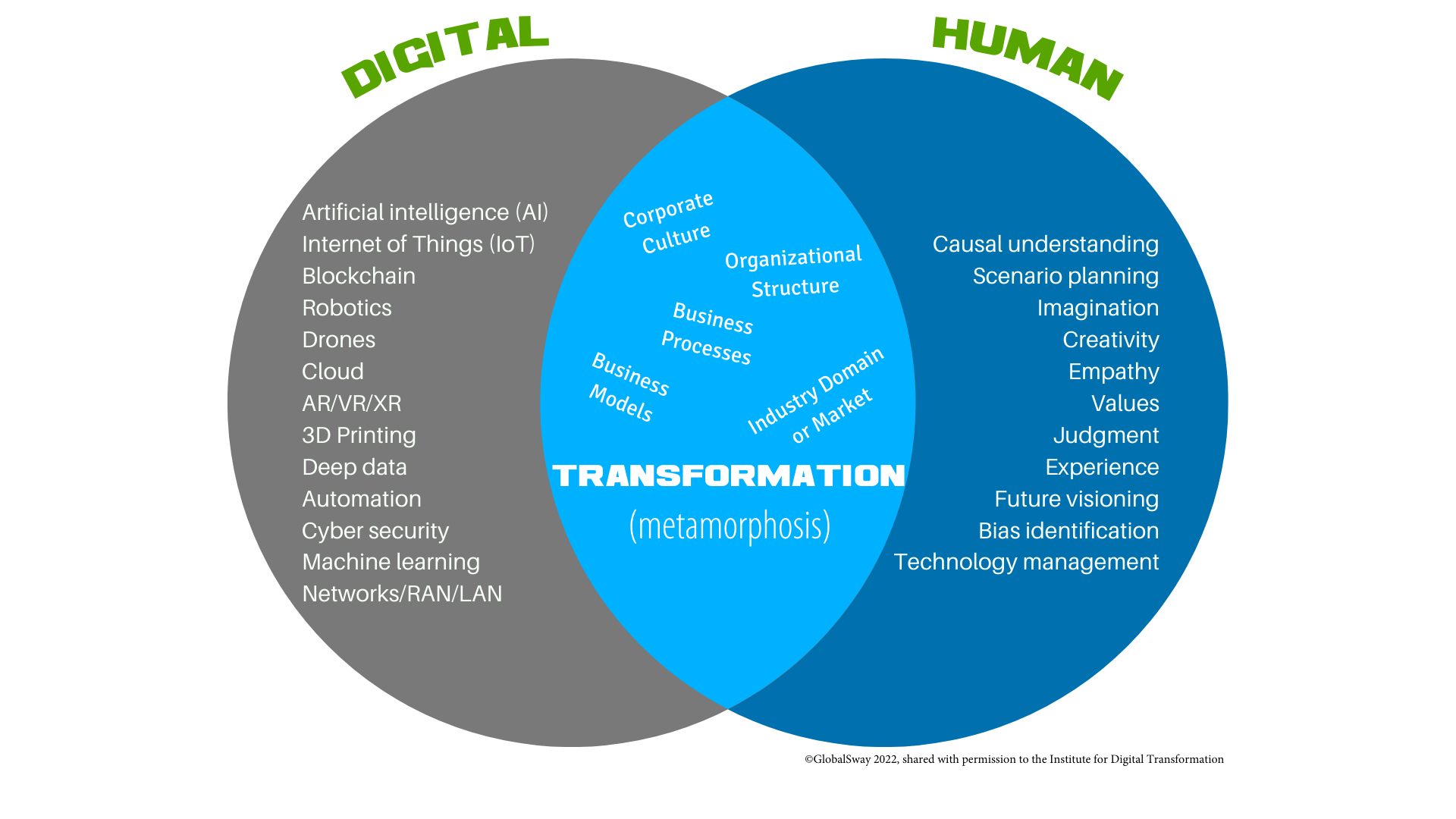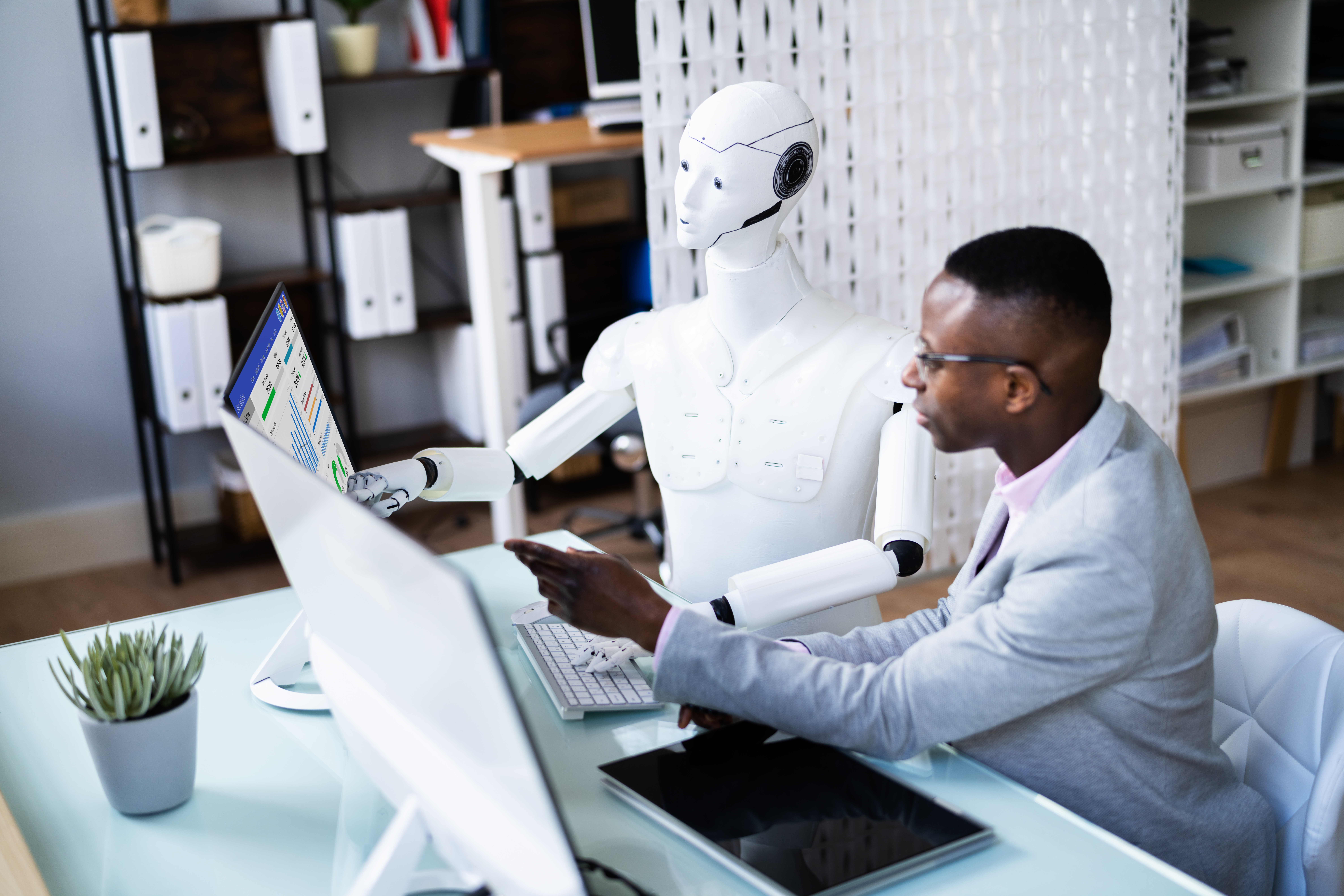Some human traits are not replaceable by AI, automation, or machine learning. Those traits consist of the glorious things that make us innately human. These characteristics differentiate us from technology and why we will always need human contribution to our businesses. These traits and skills are increasingly critical for any industry.
Blog posts and articles frequently talk about over-indexing soft skills (or what I refer to as the hard skills), listing obvious traits needed in the ‘future of work.’ They talk about empathy, psychological safety, adaptability, and resilience, critical in leading high-functioning nonrepetitive roles. But are identifying those enough to create relevance for your company?
You must also understand the value of causal understanding, scenario planning, imagination, values, judgment, visioning, bias identification, and technology management.
Valuable Human Traits
Do you remember my pal Adam, the Quality Control Specialist working on industrial engines? (The Robots are Stealing all the Jobs!) He was finding ways to carve out a new role for himself.
For the sake of Adam, let me break down those valuable human traits.
- Causal Understanding – Adam can recognize the relationship between cause and effect. He brings causal understanding to anticipate and correlate causes and the impact on the line. His experience with other departments, knowledge of the manufacturing line, the roles others play in manufacturing efficiency leads to a greater understanding than can be dropped into a specific AI model’s data set.
- Scenario Planning, Imagination, and Vision – As the technology is adopted, the use of data will increase. The company will need someone with experience and imagination to select the most valuable data for the model in scenario planning. AI is only as good as the data chosen to model the scenario. Adam has the imagination and vision needed to conceive unknown outcomes, balance priority shifts, and identify data gaps. He can connect the dots in contributing to scenarios an AI model is incapable of imagining.
- Values, Judgment, and Experience – These are the qualities of human intelligence that shine when making decisions at home or in the office. The technology will make choices based only on the data available. It will be a choice, not a judgment call. Ethical and wise judgments stem from values, and values come from experiences.
- Bias Identification– Admittedly, lack of experience can lead to a lack of bias identification. Still, even with our human shortfalls in recognizing our biases, we continue to be remarkably better than AI or Robots in bias identification. Adam’s challenge will be to ensure intentionality in bias identification on the line.
- Technology management – automated processes, algorithmic functions, and machine learning will still require oversight. Adam will be one-up on anyone else in the company to get ahead of the game rather than spend his energy fighting technological progress.
Adam must use his human imagination to learn enough about the future of his role and tie it to becoming a valued contributor in the new world order at work. So, knowing the traits is not enough; he must figure out how to make a case for a valued role when the time comes for a change.
Tip: For a deeper dive into leveraging human traits through digital disruption, please read Framers: Human advantage in an Age of Technology and Turmoil by Kenneth Cukier, Viktor Mayer-Schönberger, Francis de Véricourt
Digital vs. Human
When I speak to groups, I like to show the following Venn diagram to demonstrate how the digital tools (technical enablers to transformation) and the human traits (required ingredients to leveraging the enablers) apply to transformation. We don’t transform digital tools or humans; we transform culture, organizational structure, industry domain, business models, and business processes.

Carving Out A Role
Humans create the AI models, vet the selected data, frame the emerging patterns into business cases, and set direction with new mental models based on further information. An empowered approach will allow Adam to challenge the lens through which he sees his current role and rethink his contribution. The more Adam learns about the specifics of the type of technology replacing his current role, the more he will envision a place for himself. Here are the steps I advised for Adam:
- Document the nuances of your role to the finest of details, noting where it might intersect with other functions or departments
- Take introductory courses based on technologies replacing similar roles in your industry
- Become familiar with your company’s business strategy and how your department adds value to that strategy
- Reinvent how you can apply human characteristics and intelligence to continue contributing to your department in a fresh, valuable capacity
- Develop the skillset of making a case for a new role based on your knowledge of the upcoming changes.
But What If It Doesn’t Work Out As Planned?
Maybe your leadership can’t envision the future as you do. Your well-devised plan to do a role rethink might not make a case for the leadership at your company; it’s true.
If you have a long way to go before retirement, there is no better way to achieve loving what you do than to embrace the changes coming your way and build a plan that continues to make you highly marketable within your industry.
You got this!
Tag/s:Artificial IntelligenceAutomationBusiness TransformationDigital Disruption





Valuable reminders – very timely!